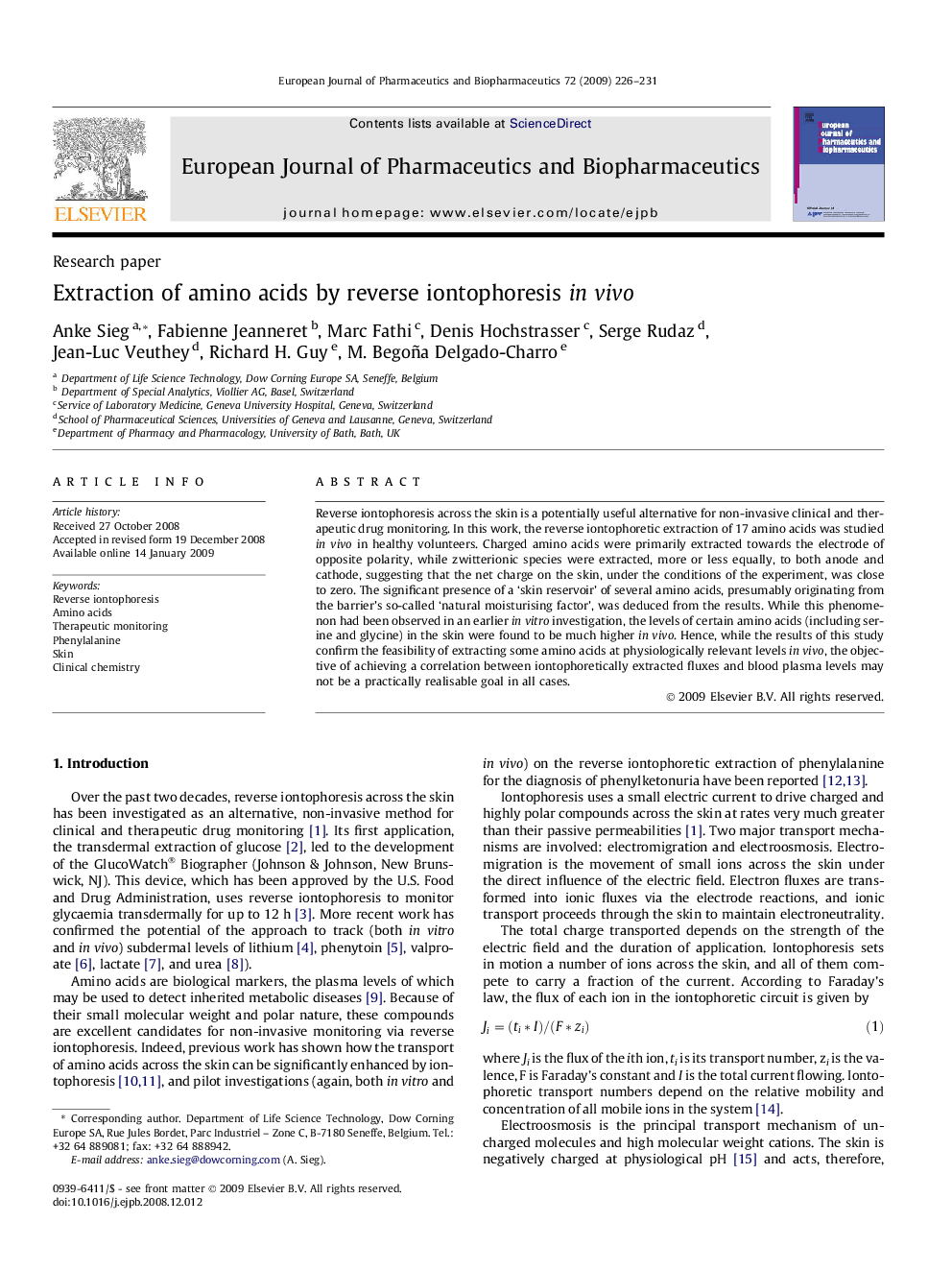| Article ID | Journal | Published Year | Pages | File Type |
|---|---|---|---|---|
| 2084365 | European Journal of Pharmaceutics and Biopharmaceutics | 2009 | 6 Pages |
Reverse iontophoresis across the skin is a potentially useful alternative for non-invasive clinical and therapeutic drug monitoring. In this work, the reverse iontophoretic extraction of 17 amino acids was studied in vivo in healthy volunteers. Charged amino acids were primarily extracted towards the electrode of opposite polarity, while zwitterionic species were extracted, more or less equally, to both anode and cathode, suggesting that the net charge on the skin, under the conditions of the experiment, was close to zero. The significant presence of a ‘skin reservoir’ of several amino acids, presumably originating from the barrier’s so-called ‘natural moisturising factor’, was deduced from the results. While this phenomenon had been observed in an earlier in vitro investigation, the levels of certain amino acids (including serine and glycine) in the skin were found to be much higher in vivo. Hence, while the results of this study confirm the feasibility of extracting some amino acids at physiologically relevant levels in vivo, the objective of achieving a correlation between iontophoretically extracted fluxes and blood plasma levels may not be a practically realisable goal in all cases.
